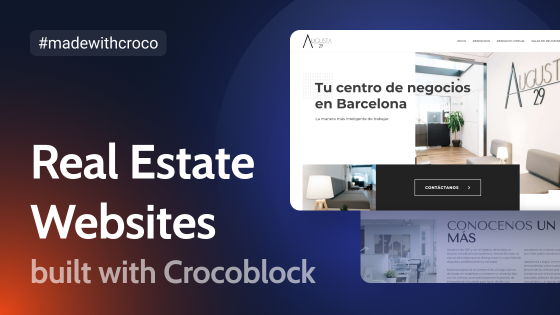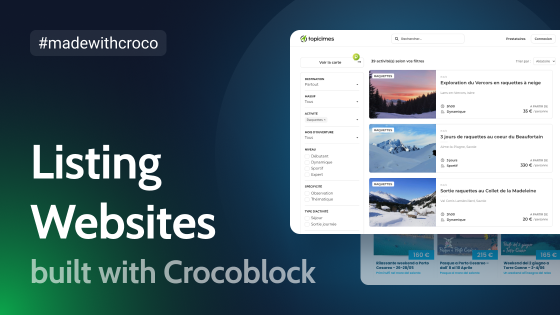I think renting is a great invention, as it gives people a chance to live in different places without huge investments and all the hassle that owning an apartment entails. Another advantage is that you can always find something on the rental market that suits you, particularly now, e.g., a perfect place for a beach vacation in summer and a nice skiing location in winter. You use it, pay for it, and when you have other plans, you just leave the place.
SaaS works like a rental market but in a software world. In this article, we will discuss this model and what is special about SaaS websites.
Table of Contents
- SaaS Model Explained
- SaaS Websites and WordPress
- 4 Inspiring SaaS Websites Made with WordPress
- 5 Ideas on How to Use Crocoblock for SaaS Websites
- FAQ
- Key Points
SaaS Model Explained
SaaS stands for “Software as a Service” and means that users pay for a ready software product to serve their business needs. They access it over the Internet, particularly their browser, and pay for the time and resources they use using a subscription model. So, they don’t have to install anything on their computers, maintain or develop anything. Netflix, Dropbox, and Google Workspace are some of the most famous examples of the SaaS model.
The distinction between ordinary websites and SaaS platforms lies in their purpose and functionality. Websites typically consist of pages designed to give some information for reading, watching, or listening, file downloads, and form submissions. On the other hand, SaaS platforms are web-based systems that offer specific software functionality to end users so they can log in there, manage their accounts, and find resources like tutorials, customer support, and billing information. The website might also showcase the software’s features, pricing plans, and customer testimonials to attract new users.
Difference between SaaS, PaaS, and IaaS
SaaS is a cloud computing model, meaning that the software can be accessed over the Internet, and all the infrastructure for this software is hosted in a cloud. Its maintenance, security, access, and scalability are the responsibility of the service provider. For example, if Netflix suddenly deletes your Favorites list or account, you can’t influence it by fixing something from your side, but you can message the support and ask for help.
There are two more popular categories of cloud computing: PaaS and IaaS.
PaaS stands for “Platform as a Service”, and while SaaS is for end users, PaaS is for developers, so they can deploy and maintain applications without stressing about the underlying infrastructure and runtime environment. This way, developers get a platform as a service and can build their custom SaaS apps or test things there. Microsoft Azure, Google Cloud, and IBM Cloud are examples of PaaS.
IaaS stands for “Infrastructure as a Service” and is for network architects – those who build their platforms. What they get is a cloud infrastructure and certain storage. It’s a solution for those who want to have full control over their resources but don’t want to buy and maintain their own physical servers. Amazon Web Services (AWS) is an example of such a model.
PaaS and IaaS are often offered by the same companies, depending on the servers to which you are subscribed.
Key features of SaaS
The idea of something similar to SaaS was born at the beginning of the Internet era because it was obvious even then that sharing and distributing responsibilities could reduce costs for hardware, maintenance, implementation, etc.
There are a few features that are essential for SaaS solutions:
- web-based nature;
- multi-tenancy (shared architecture);
- subscription-based pricing;
- automatic maintenance, updates, and management of the architecture;
- integration capabilities;
- scalability and customizability.
SaaS Websites and WordPress
When talking about SaaS, we mean custom software, but any project like this requires a supporting website to manage users, provide information, and serve as a knowledge base and marketing tool. That’s why many SaaS companies use subdomains to access the software itself (most often, it’s something like my.website.com) and the main domain (website.com) for a website. For instance, the managed hosting that can be considered SaaS rather than PaaS, kinsta.com, has a subdomain, my.kinsta.com, for logging into the admin panel to provide its services. That’s why SaaS websites can run on CMS like WordPress, and many of them already do.
- Membership website functionality. To put it simply, there’s no SaaS without membership-paid plans – but that’s true.
- Knowledge base and Help Center for the users to give them all the information about the product.
- Selected visibility and functionality for particular features.
- Catchy marketing features to attract new customers.
As you can see, websites on WordPress CMS can do a lot here.
4 Inspiring SaaS Websites Made with WordPress
When we talk about CMS and SaaS websites, it’s essential to separate the functionality of the software and what the website does. In most cases, SaaS websites are aimed to attract users and show all the benefits of the product.
Here are some examples of such sites created with WordPress.
This company offers accounting services on demand, and their designer definitely loves the green color.

Fountain is about work, new optimization techniques, and a fast hiring process, and this idea is clearly reflected in the design of this site.
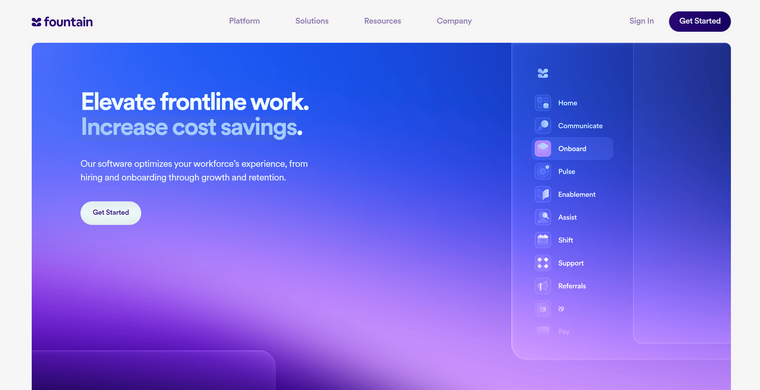
This service offers tools to launch, run, and grow a pet care business. Its illustrations tell the story from the first look, nicely blending it with the interface presentation.
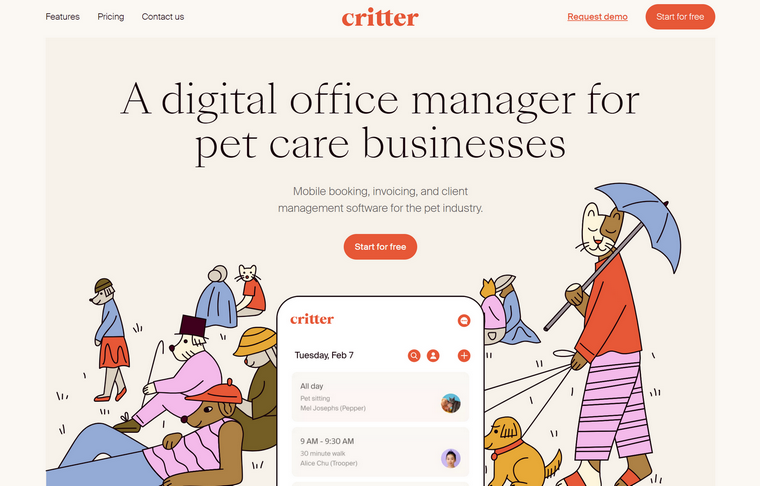
Cello is a SaaS service for other SaaS services and concentrates on referral programs. The landing page seamlessly integrates illustrational images right in the heading.
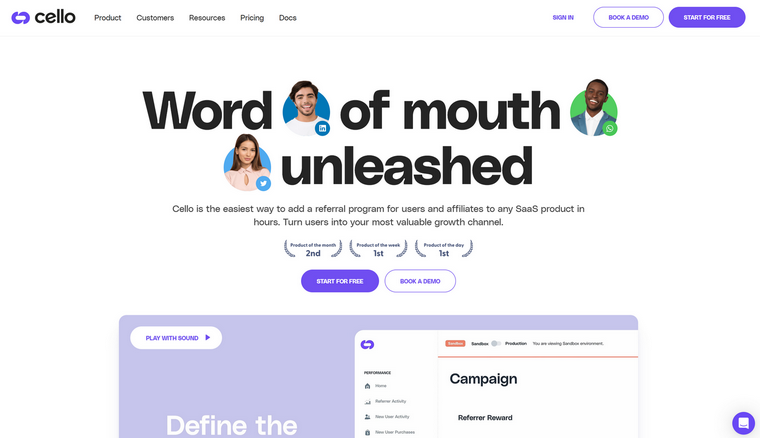
5 Ideas on How to Use Crocoblock for SaaS Websites
Crocoblock is a plugin suite for any WordPress website of any complexity, and it offers a full set of instruments for SaaS websites. This is how the plugins of this toolkit can satisfy various aspects when it comes to such projects.
- JetEngine can be a cornerstone of any dynamic website. Using it, you can create custom post types, fetch them dynamically anywhere on the site, and create a helpful knowledge base for your clients. Read this case on how to do it. It also has a flexible profile builder to add membership functionality.
- JetElements will help you to develop catchy landing pages that convert. It offers a set of highly customizable design widgets for Elementor.
- JetFormBuilder is one of the most powerful form builders on the market. It’s also very helpful for creating user dashboards.
- JetAppointment will help you schedule calls with clients to onboard them or contact support. Read this article about the Crocoblock team’s use case.
- JetSearch adds fast AJAX search functionality for your website.
There are many more plugins and ideas for using them on your SaaS website. Feel free to share your ideas and use cases in the comment section below.
FAQ
SaaS websites provide information about the SaaS tool and serve two main purposes: presenting the product and providing documentation to help users understand how it works.
Yes, WordPress is a great platform for SaaS websites.
Key Points
While SaaS is custom software, SaaS websites are a presentation tool for it, in the first place. Also, they give information about the product, documentation, and membership functionality. WordPress is a great tool for creating such websites, especially when combined with a powerful plugin suite like Crocoblock.
